










A face-to-face meeting with the designer the world associates with the most sublime Made in Italy creativity. He has designed some of the most famous cars of all time but he is active in many other sectors, ranging across a wide variety of products. Here, a creative talent with an inquisitive mind and his feet firmly on the ground talks about himself and his work
by Marta Bernasconi - ph. Courtesy by Italdesign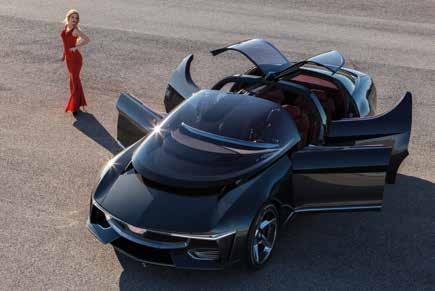

Described as the Car Designer of the Century, he has made his mark on the history of many car manufacturers, designing vehicles that now form part of the collective imagination – take, for example, Fiat and Volkswagen with the Panda and Golf. He has also designed trains, boats, watches, sewing machines, the infamous DeLorean from Back to the Future and even a pasta shape (Marille).
Giorgetto Giugiaro was born with a great talent, nurtured in a stimulating family environment. He transformed this gift into a career he is utterly passionate about. His talent became clear at a very early age, and his father, a musician and fresco painter for churches and manor houses, recognised and encouraged it, setting the boy the task of copying the sketches of dancers by Degas and Toulouse-Lautrec when he returned home
Above, from left, two cars created by GFG Style, the new company in which Giorgetto Giugiaro and his son Fabrizio both work. From left, the four-door Sibylla and the Bandini Dora, a sporty, electrically powered two-seater
It’s unusual to see Giorgetto Giugiaro without a pencil in his hand. Born with a talent for artistic design, he later studied technical design (a subject he is equally enthusiastic about) in Turin. While he was still a student his sketches drew the attention of Dante Giacosa, technical director of Fiat
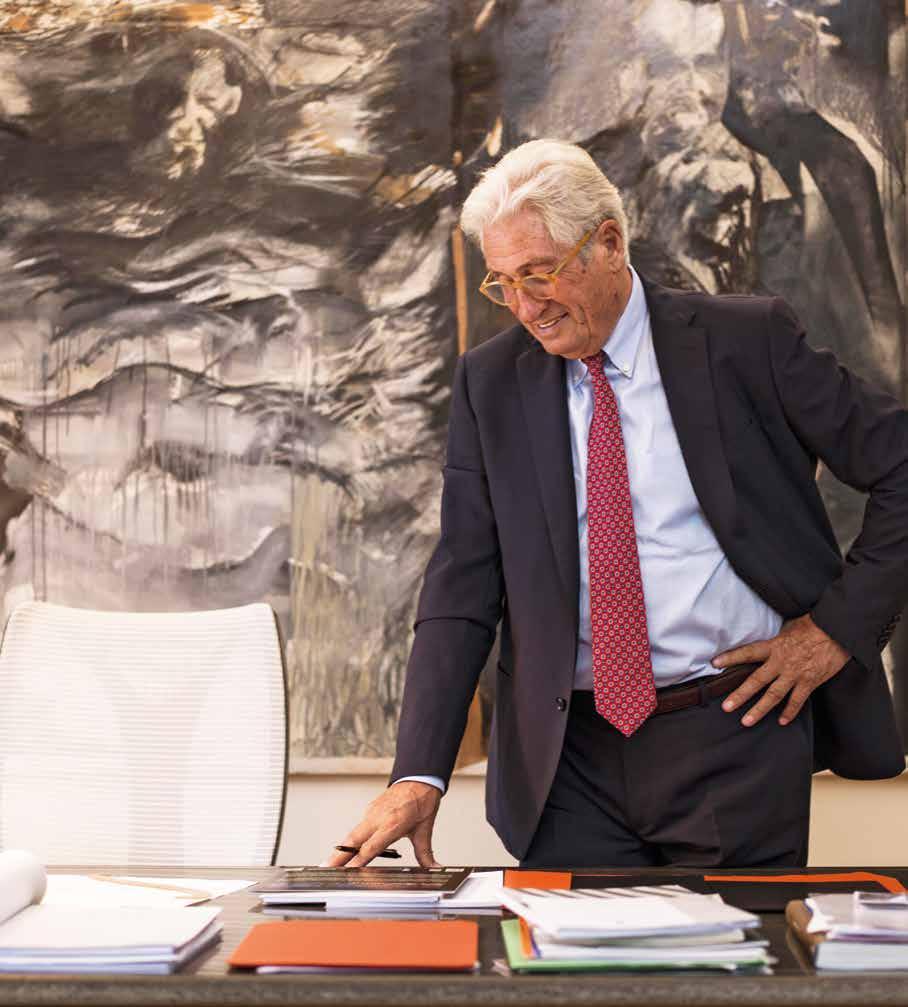
from school. His artistic training and drawing skills drove him forward, helping him develop the ability to develop his ideas rapidly and immediately recognise their potential. “When I set up my studio, Italdesign, I made sure to associate myself with a technical partner capable of foreseeing and resolving any critical issues in a project. He was called Aldo Mantovani, and he was a great friend of mine. The Turin Polytechnic awarded him an honorary degree in mechanical engineering. We both expressed ourselves through our drawing, and understood one another’s sketches. That’s how I design, but I know there are many industrial designers who don’t draw, they achieve excellent results using a computer”. Giugiaro’s creativity takes in many fields, but his designs don’t embody a definitive, easily recognisable style. “I think it would be presumptuous to link a consumer item with its designer’s particular style. Every product brings its own challenges – its purpose, the investment required for its production, the brand philosophy and the shaping of its personality, an appeal that will draw in the user. It’s different when they ask you to create a family feeling for a new car range. In this case the brand personality must be expressed through several distinctive aesthetic elements like the grille and the way the side flows. I have no problem with designers
Not only cars. The industrial designer is also fascinated by the world of yachts and sailing. One reason for this is that he thinks the relationship between a yacht, the water that supports it and the animal world it hosts are further stimuli for a designer. His creativity embraces many fields, as witnessed by the long series of products he has brought to life. Means of transport and the idea of movement, though, remain the main focus of his activity. However, the objectives of the creative act are important, and that is what emerges when he reflects on a type of object he would like to design but has never had the opportunity to tackle. “When I was younger I would have said a military vehicle, because it requires the elimination of the superfluous. Given how things are at the moment I wonder how great it would be if the people in power regarded armaments as superfluous”
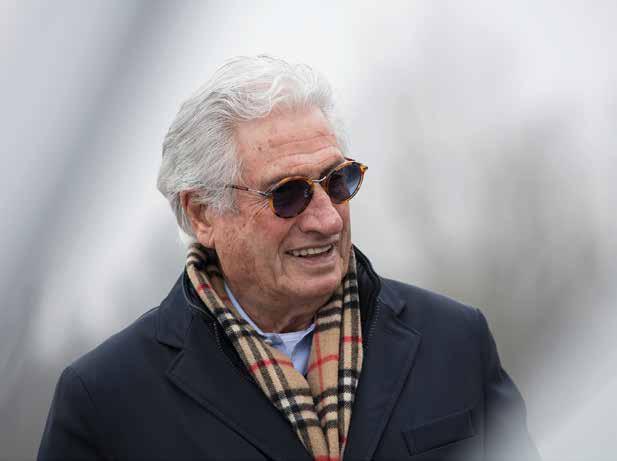
who aim to create a recognisable style for their products, but it’s not one of my ambitions”. A clear example of this unusual approach to new projects is the way he went about designing a new pasta shape for the Barilla brand. Following the brief he came up with the idea of a macaroni-type pasta in the form of the Greek letter beta. His first concern was to make sure the boiling water could be drained properly and that the sauce would be held by the internal grooves of the two “cylinders”, creating a pleasant taste experience. The process began with an idea and was followed by research to investigate its efficiency in all aspects, and the style followed on from this.
But what is the secret behind such fertile creativity, which has enabled him to enjoy such prestigious and long-lasting relationships? In his words, “I’m a very inquisitive person, and I like to memorise the many signals of change in the most diverse expressions of creativity, like fashion, the languages of communication, cinema, cooking, architecture and music. The desire for the new also shapes the judgment on the beautiful that evolves from it. Every project has its own story and the creative result responds to very precise requirements – the correspondence between form and function, user friendliness, bringing in the new
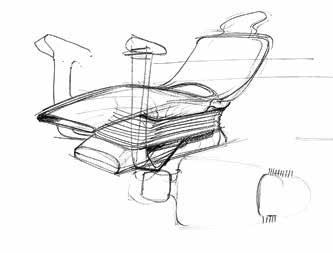
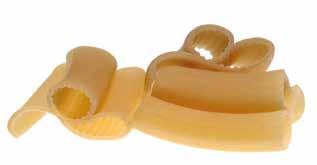



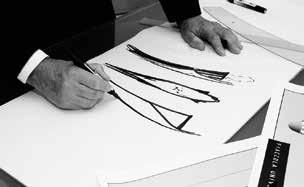

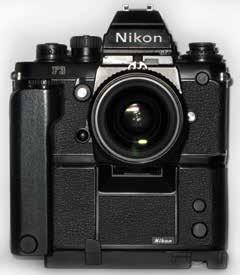
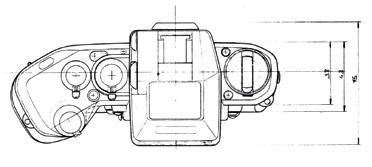
Giugiaro’s thought on yacht design: “The dialogue between car and marine design rests on the sublime. The masses are different but the profiles and perspectives reflect the classic design canons. Lack of time has held me back a great deal but when I’ve taken on marine projects I thought as an architect rather than a stylist, emphasising the definition of spaces with different functions and the requirements for privacy and comfort rather than the dynamics of the lines. When Saudi businessman Adnan Kashoggi wanted to build a glitzier new Nabila (left), which was never constructed, I remember that his main preoccupation was to separate the on-board life of the owner and his intimate circle from that of other guests and the crew”. Below, a concept

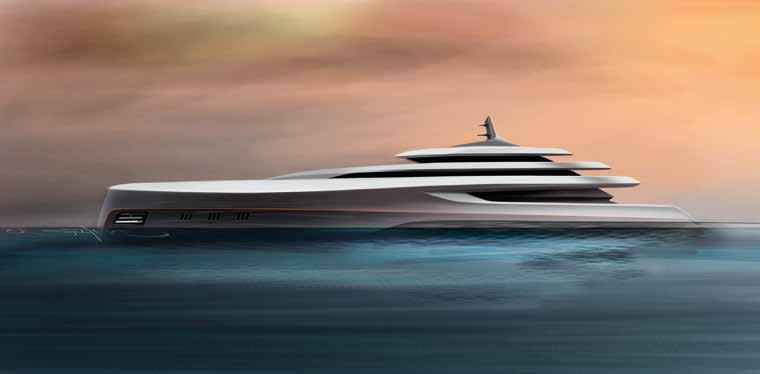
product at the right cost, choosing the most suitable materials and rationalising the technology. Everything is perfect if the producers and their marketing people are willing to enter into an honest dialogue with the consumer about the requirements and performance of the new article”.
The industrial designer then reflects on the changes that have taken place in the sector over the last few years and how they are influencing the car market.
“Car enthusiasts are extremely spoilt by the relationship provided them by technology, IT and infotainment. Driving, though, now demands more care and attention given the risks surrounding
greater relaxation. We fool ourselves into thinking we’ve become skilful chess players who can play at several boards at the same time. I must admit I’m always increasingly fascinated by a Cisitalia or a Citroen 19”.
Our curiosity leads us to ask what Giorgetto Giugiaro regards as the most challenging car design project he has undertaken.
“I always answer that question by saying it’s the Fiat Panda. A box that had to offer more facilities inside precise dimensions and had to respect the industrial cost levels specified by the manufacturer”. The box turned out to be a triumph – born in 1980, it’s still on the road today in its original form or with the later restylings.